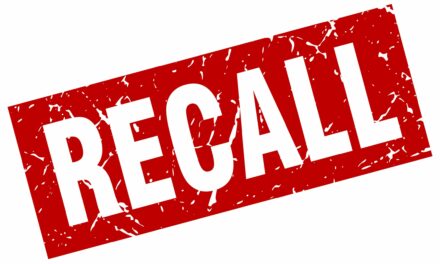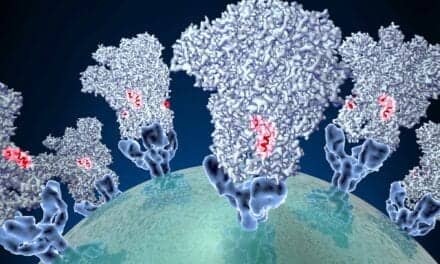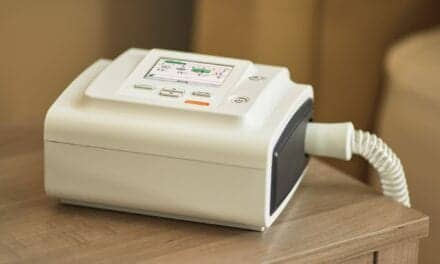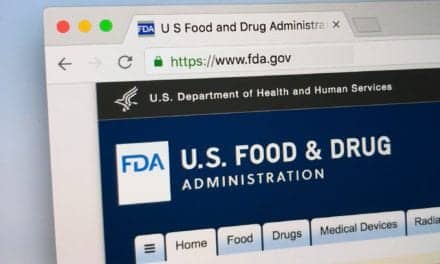SoClean has issued a voluntary recall of its SoClean2 and SoClean3 equipment used to clean, sanitize, or disinfect CPAP devices and accessories after receiving complaints resulting from improper set-up, unauthorized device modifications, and use by individuals for whom the device is not recommended.
Common complaints include the customer not being able to set up or turn on the device, mildew smell in the hose, excessive ozone smell, cough, and exacerbation of preexisting conditions.
SoClean has received approximately 7,417 complaints, equating to 0.33% of all SoClean2 and SoClean3 units sold, according to a field correction notice issued on Nov 16 from the company. The correction does not require users to stop using or return their SoClean unit.
The company’s recall consists of a new user manual with additional instructions for use and a hose and mask adapter provided by the device manufacturer. The voluntary recall is intended to help reduce potential health risks of exposure to ozone gas after the use of a SoClean device.
As stated in the user manual, persons with underlying lung diseases, such as asthma and chronic obstructive pulmonary disease, and those with cardiovascular disease may be sensitive to ozone and should consult with their health care professional before using a SoClean2 or SoClean3, according to the company’s notice.
SoClean is revising its labeling to incorporate additional warnings and contraindications and proper and consistent device set-up instructions including the use of a hose and mask adapter, thereby reducing potential risks associated with the previous device design and labeling.
The affected products are:
- SoClean2; Unique device identifier number 187293000860
- SoClean3; Unique device identifier number 187293000860 /(01)00858242007147(21)
Recommendations for Consumers Using SoClean2 or SoClean3
The US Food and Drug Administration (FDA) provided additional information regarding the recall in a safety communication, which advises users to:
- Not use SoClean2 or SoClean3 without the hose and mask adapter provided by the manufacturer.
- Never connect SoClean equipment to your CPAP device when the CPAP device is in use.
- Read the new version of the User Manual for SoClean2 and SoClean3 and carefully follow the instructions if you are using SoClean equipment.
- Follow the CPAP manufacturer’s cleaning instructions to clean your CPAP, including any instructions contraindicating the use of ozone gas or UV light to clean, sanitize or disinfect CPAP devices. The cleaning instructions provided by SoClean2 and SoClean3 are not intended to replace CPAP manufacturers’ cleaning instructions but rather are intended to be used to supplement cleaning procedures for CPAP masks and tubing.
- Review the recall notice from SoClean, which provides recommendations to users and unique device identifier information to help identify affected products.
Using the Hose and Adapter
Typically, CPAP manufacturers recommend regular cleaning of CPAP device accessories with mild soap and water. Ozone, sometimes called “activated oxygen,” is a gas that can be used to kill harmful bacteria. However, for ozone to be effective in destroying harmful bacteria, it must be present at a concentration above levels considered safe for humans.
When used as directed, the SoClean hose and mask adapter and new user manual are intended to help reduce the risk of patient exposure to ozone gas during use of the SoClean equipment or remaining in the mask or hose after cleaning.
How the adapter works, per SoClean:
- The adapter is placed between the SoClean ozone tubing and the ventilation hose. The adapter prevents ozone gas from entering the CPAP machine and/or its water reservoir.
- The mask remains attached to the ventilation hose at the other end. The SoClean’s ozone tubing is attached to the adapter’s port, the mask is placed in the SoClean chamber, and the lid of the chamber is closed.
- When the SoClean is turned on, ozone generated by the SoClean is then directed into the mask and hose through the ozone tubing.
Proper use of the adapter helps reduce the risk of patient exposure to ozone gas, by preventing ozone gas from entering the CPAP machine and/or its water reservoir. In addition, the instructions for ozone aeration after cleaning will reduce the risk of exposure to ozone left in the mask or tubing (residual ozone), according to the company.
The FDA notes in the safety communication that it continues to work with SoClean to bring the firm into compliance with FDA requirements. The FDA also reminded consumers that it has not authorized for market any devices using ozone gas or UV light to clean, disinfect, or sanitize CPAP devices and accessories (for example, hoses, masks, tubing, and headgear).
Problems associated with the use of SoClean 2 and SoClean 3, or any other medical device, can be reported through the MedWatch voluntary reporting form. Health care personnel employed by facilities that are subject to the FDA’s user facility reporting requirements should follow the reporting procedures established by their facilities.










